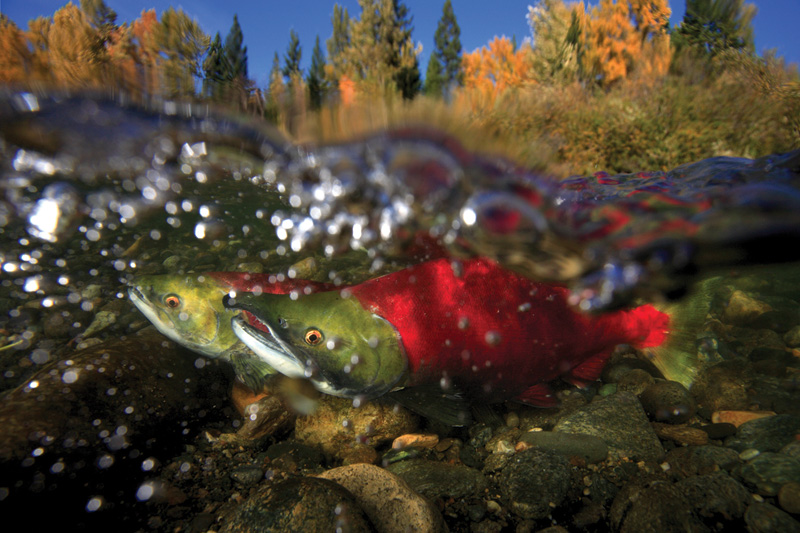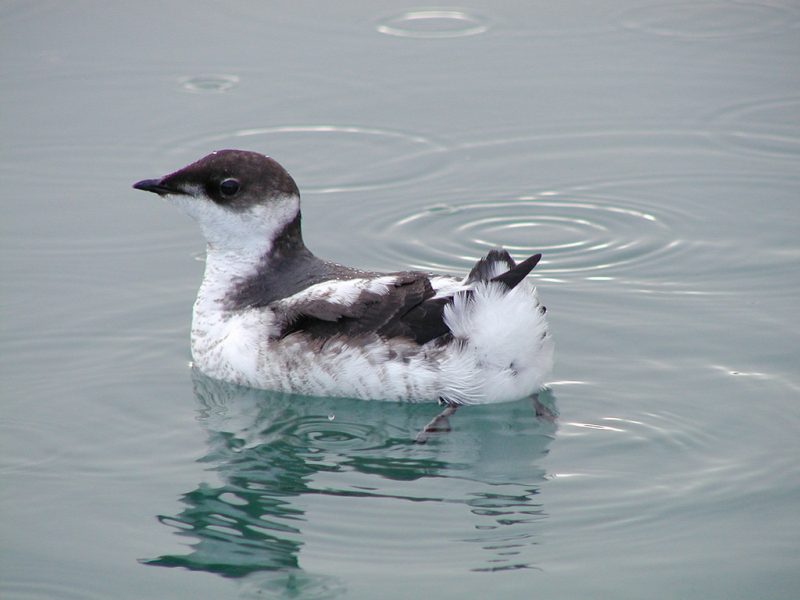Clean water for salmon
A salmon’s life begins and often ends in the forest. Salmon are an important species for Washington’s ecosystem, cultural identity and Tribal Treaty Rights. To help sustain and recover Washington’s struggling salmon runs for the fish, orcas, and people that rely on them, it is vital to protect stream habitats and surrounding forests.
Many factors of timber harvests can impact stream health. One of these includes the retention of forests along stream banks, which create a “buffer” between the water and the harvested area. Suitable buffers should prevent erosion to keep sediment out of the water and stabilize steep slopes to reduce landslide risk, and provide shade which keeps water temperatures cool for the aquatic species that live there and downstream.
Keeping headwater streams cool and clean is essential to providing suitable habitat for downstream fish and amphibians and to meet the requirements of the Clean Water Act. Similarly important is to identify which streams have fish in them, and to remove barriers like culverts, that prevent fish from swimming upstream and block miles of habitat.
To do this work, WEC participates in the state’s collaborative Forest Practices’ Adaptive Management Program, with the goal of providing better habitat protections for salmon and other aquatic species on more than 9 million acres of state and private forestland.
Learn more about WEC’s work to protect habitat for salmon and all who rely on them.

Marbled murrelets
The marbled murrelet is a small seabird that flies up to 55 miles inland to nest on the mossy branches of mature and old-growth conifers. The murrelet is in decline due to the loss of vital nesting habitat, mainly from historic and ongoing logging. Federally-listed as threatened, and state-listed as endangered, this is a critical time for the seabird and its declining population.
The marbled murrelet is what is known as an indicator species, meaning it is a species that helps scientists measure the environmental condition of a region. A declining population of marbled murrelets suggests that the overall health of the region might be in peril. Our state forests provide habitat for a number of species protected under the Endangered Species Act. By protecting marbled murrelet habitat, we are also protecting an entire ecosystem.
In December 2019, the Board of Natural Resources adopted a Long-term Conservation Strategy for the marbled murrelet on state forestlands, and in doing so obtained a permit from the federal government that will allow the agency to harvest timber while impacting marbled murrelet habitat. Unfortunately, the adopted strategy is far less protective than effective conservation of Washington’s murrelet population requires. WEC and our partners have been engaged in the state’s conservation strategy process for years. Read our response to the Board of Natural Resources’ adoption of an insufficient plan.

Program contact
Alec Brown, Forests & Fish Program Manager

